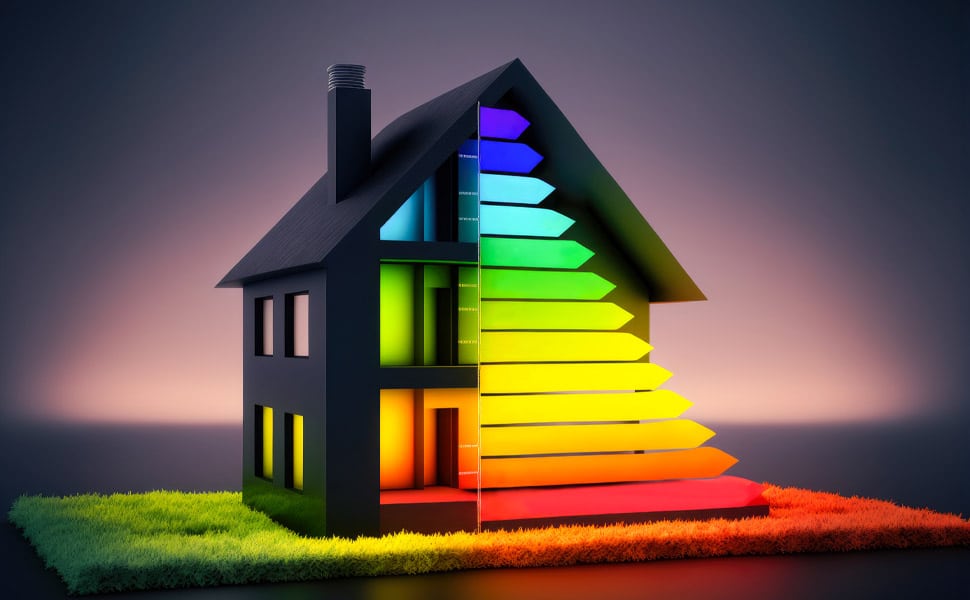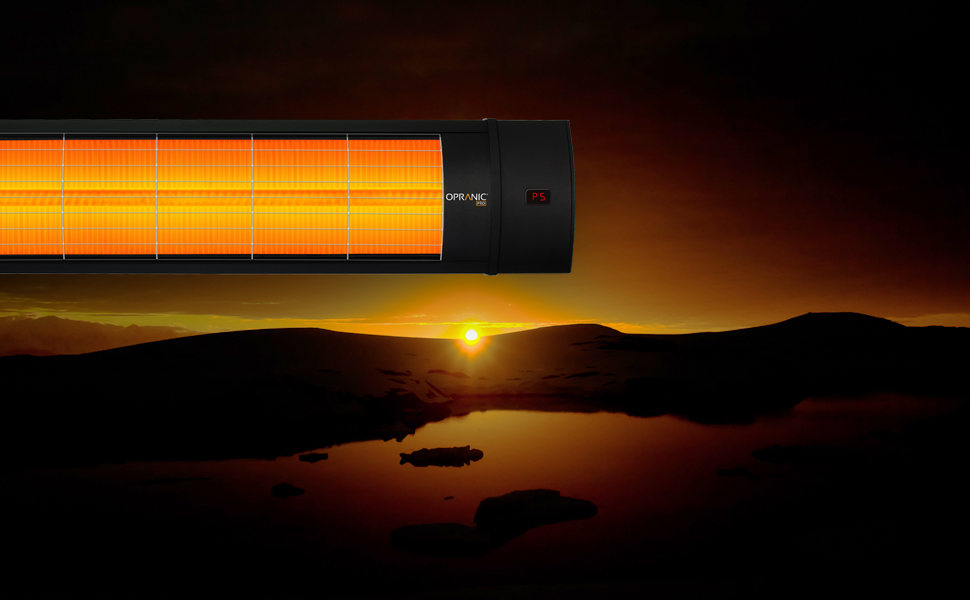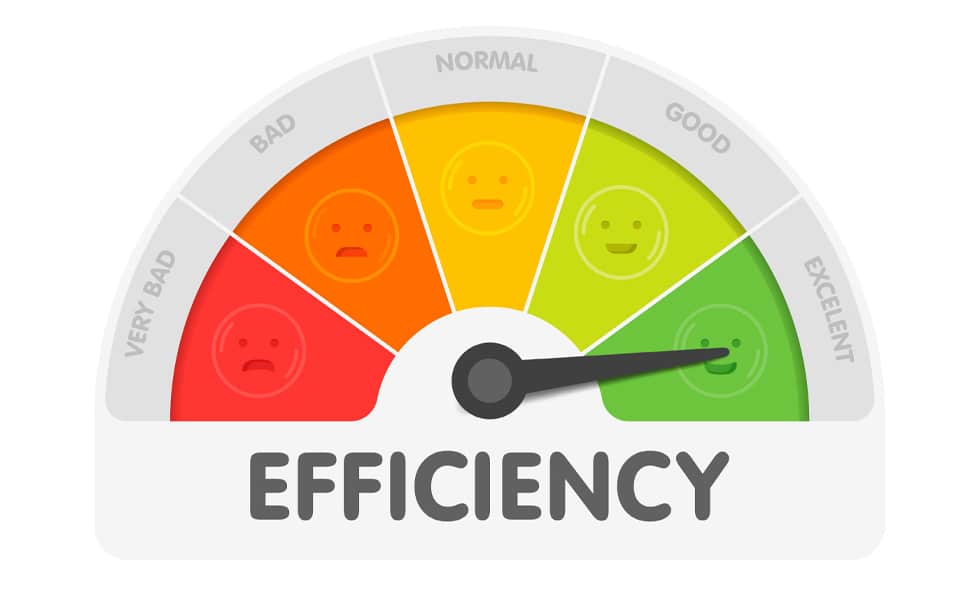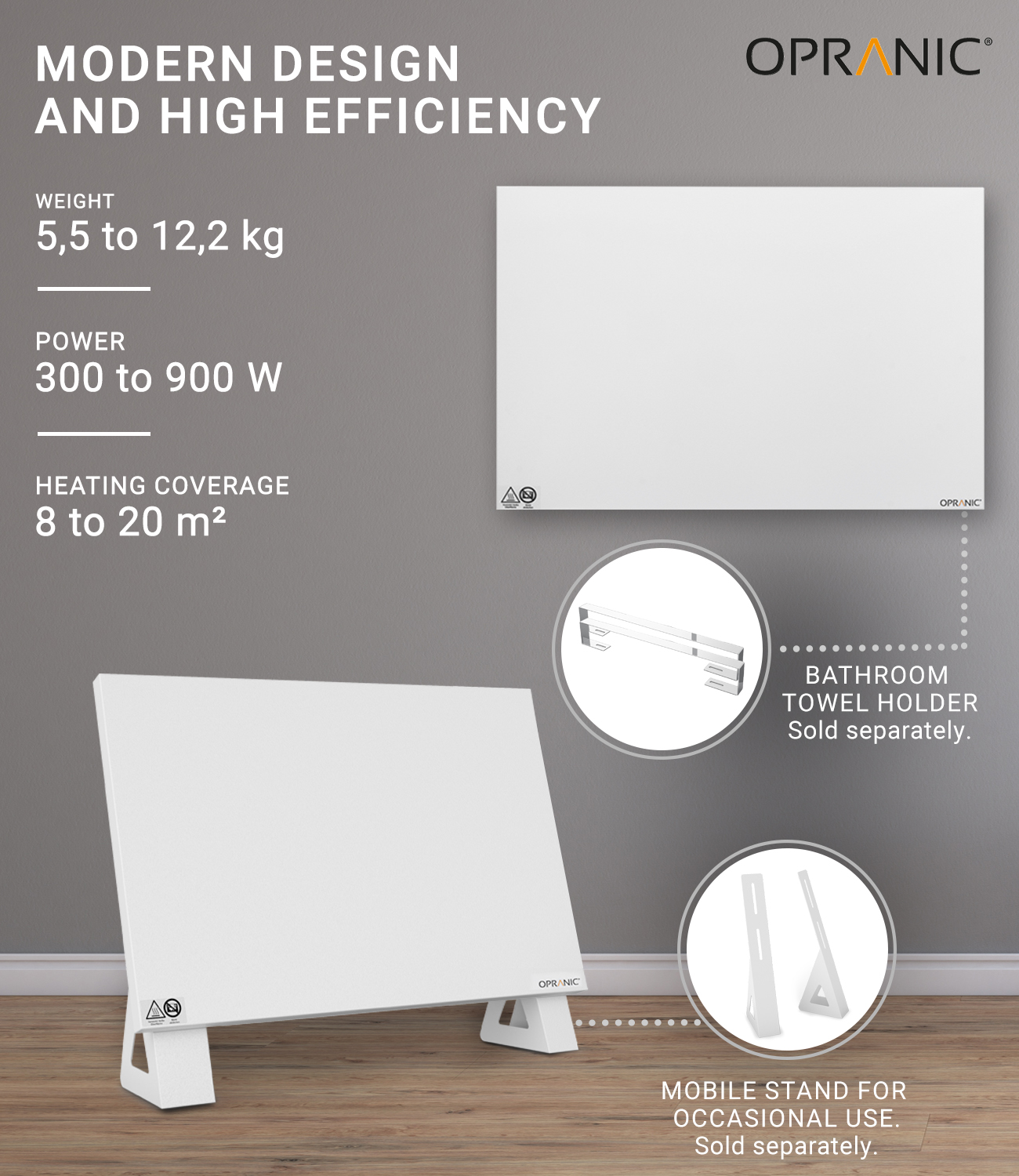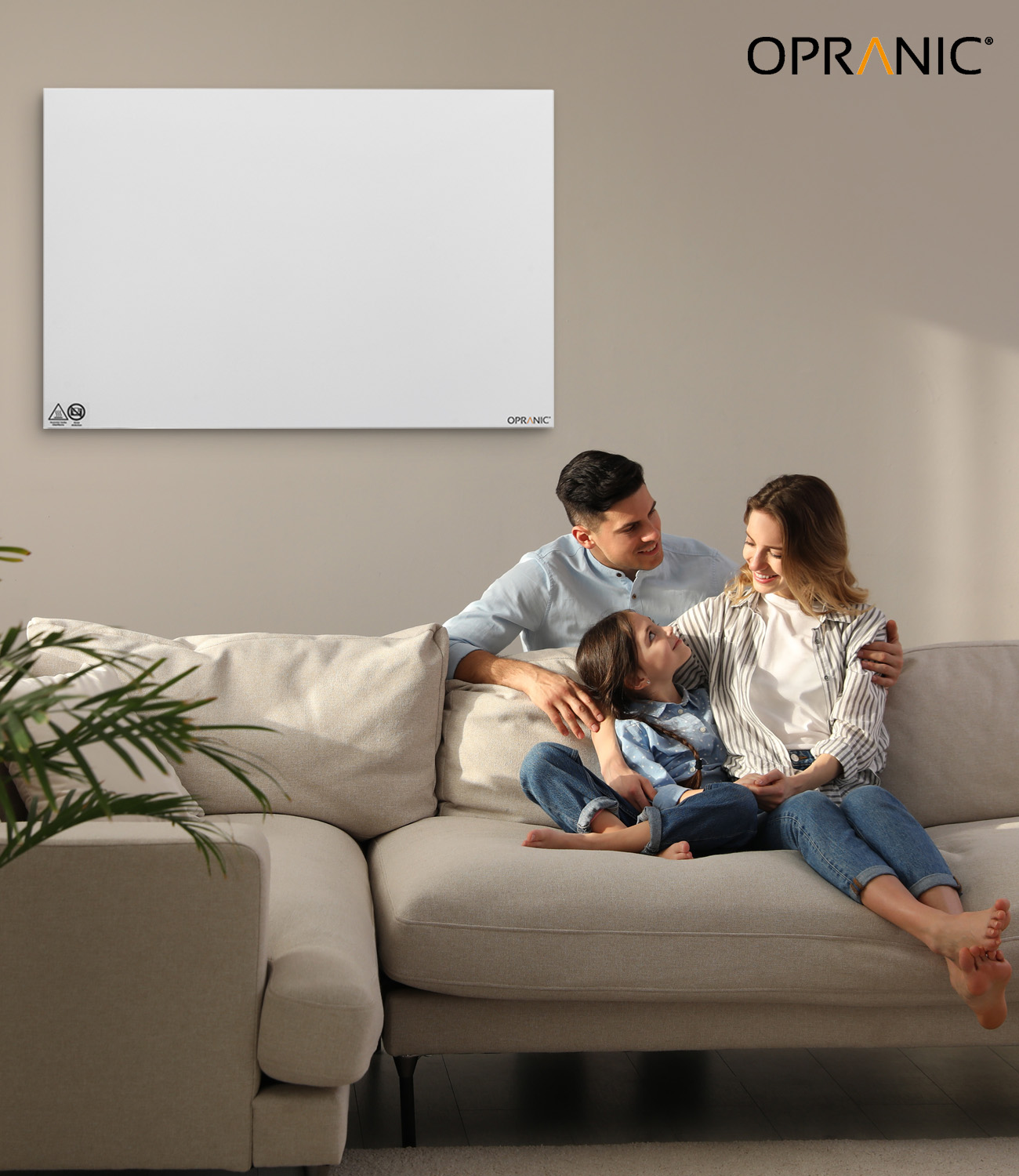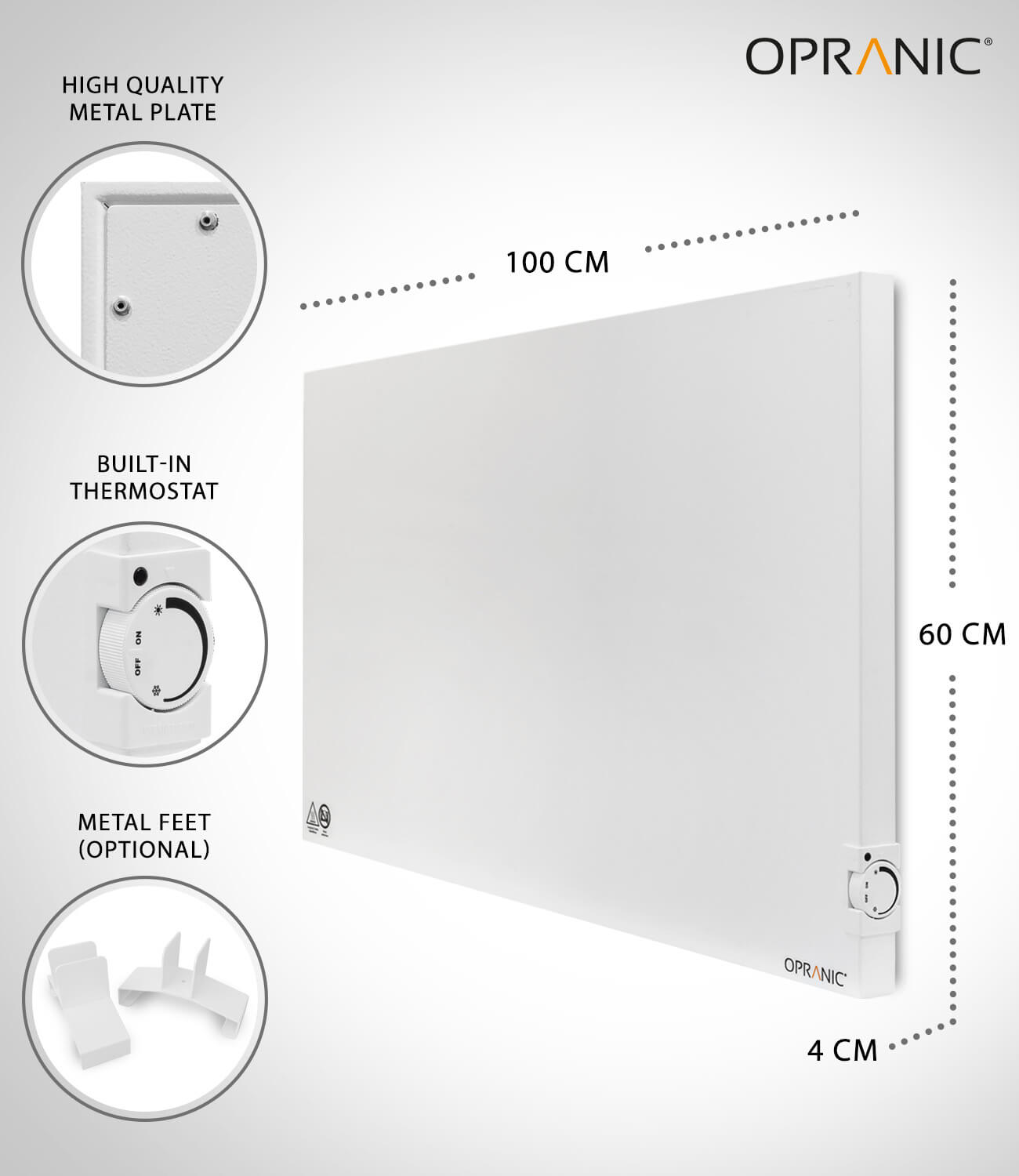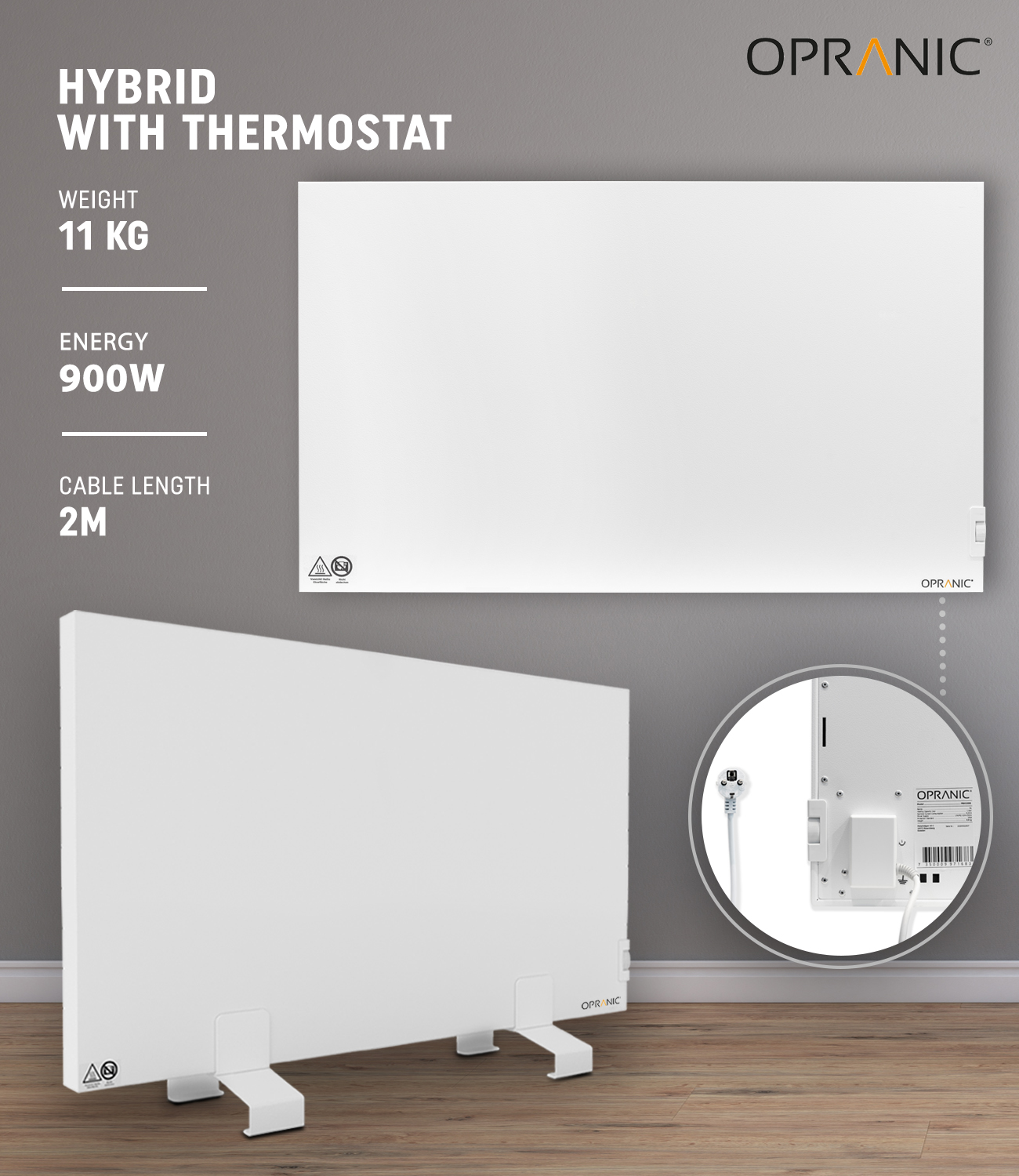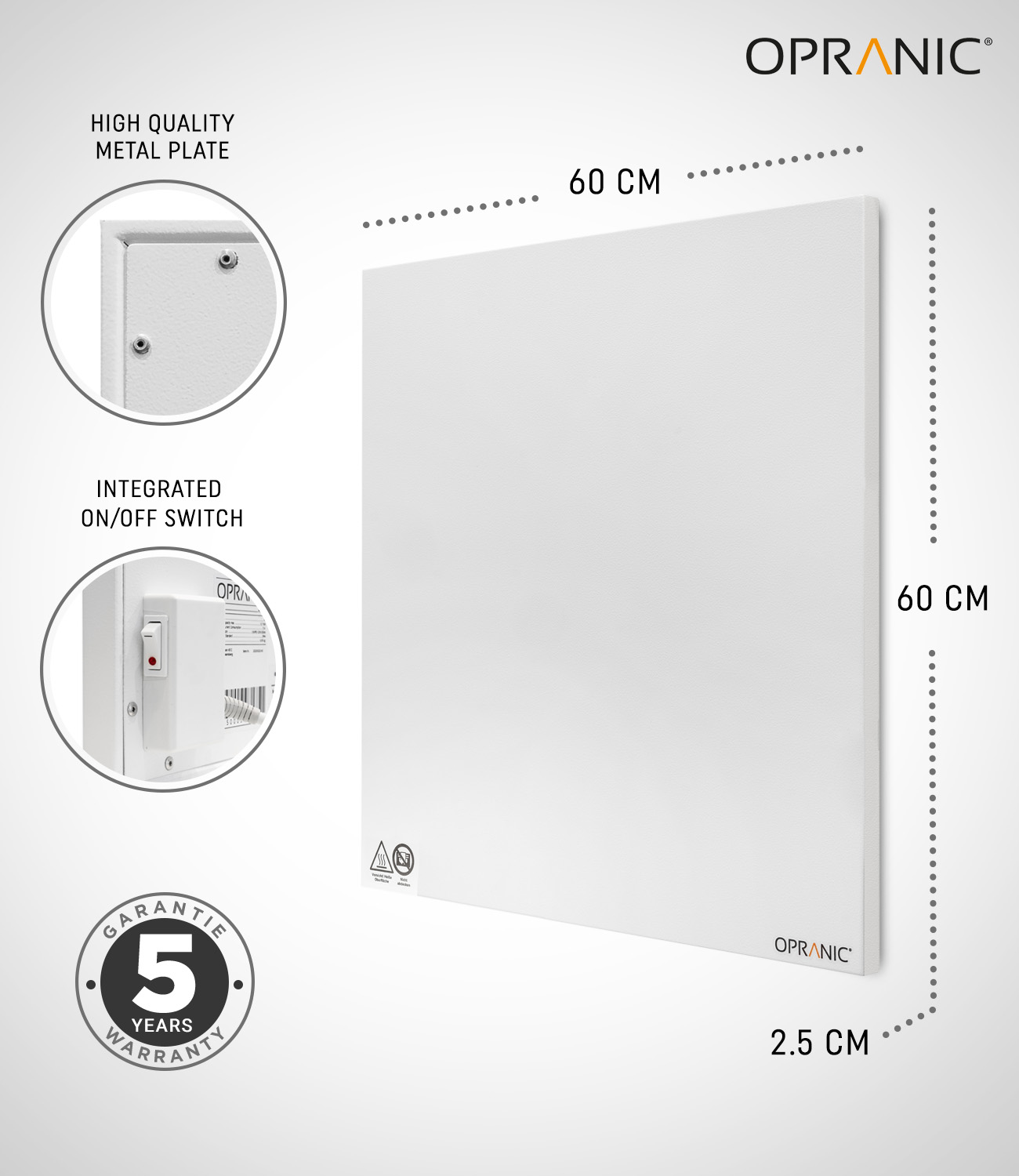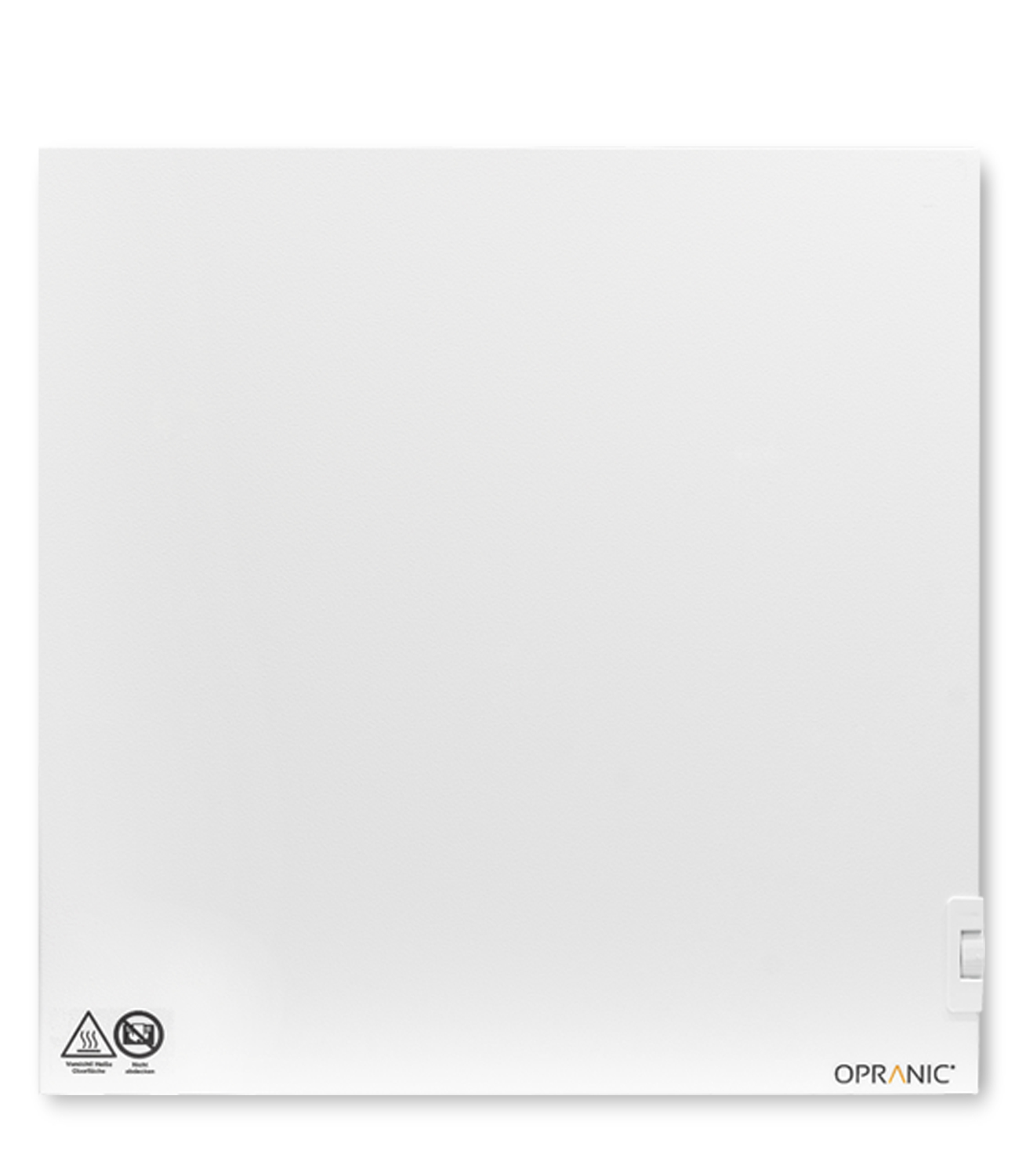Energy efficiency of infrared heating is more important than ever in today’s world where climate change and pollution are at the forefront.
The need to save energy and reduce the carbon footprint has driven technology and innovation in the heating industry, especially with infrared heaters.
Advantages and efficiency of infrared heaters
Infrared heaters are at the heart of this revolution. They use radiant heat and provide pleasant warmth throughout the room. Compared to other heating methods, they are energy efficient and environmentally friendly, especially if the electricity they require comes from renewable energy sources.
Compared to traditional heating methods such as radiators or electric heaters, infrared heaters consume significantly less electricity. This is because they deliver heat directly to people and objects, such as a wall panel or ceiling heater, instead of heating the air. This direct heat transfer mechanism makes infrared heaters more efficient. In addition, tests, in particular the “infrared heating test”, have shown that they are superior to other heating methods, such as fan heaters or radiant heaters, in terms of energy consumption and heat output.
The advantage of the energy efficiency of infrared heaters
Energy efficiency of infrared heaters: A practical example
A simple example to illustrate: imagine you are standing directly in the sun on a cold winter day. Even if the air is cold, you will feel the warming rays of the sun directly on your skin. Infrared heaters, whether wall-mounted or floor-standing, work on a similar principle, radiating heat directly.
Comparison of the energy consumption of heating methods
If we compare the energy consumption of infrared heaters with traditional heating methods, especially with systems that heat the entire room, we see significant differences. Traditional heating systems, such as radiators, heat the air in the room. This heated air rises, cools, and sinks back down, creating a circulating effect. This process requires a constant supply of energy to continuously heat the air.
Infrared heaters, on the other hand, radiate heat directly onto people and objects. This means that the energy is used directly where it is needed and is not wasted heating all the air in the room. This direct heat transfer mechanism is not only more efficient, but also leads to a more comfortable indoor climate, as there are no cold zones. The energy efficiency of infrared heaters therefore contributes to a more comfortable living environment.
Factors influencing the power consumption of infrared heaters
Despite these advantages, however, it is important to emphasize that the actual power consumption of an infrared heater is influenced by various factors. These include the size of the room to be heated, the quality of the building’s insulation and the outside temperatures. A well-insulated building, for example, requires less heating energy as less heat is lost to the outside.
In addition to the transitions added, here is the updated text with at least 6% transition words:
Energy efficiency of infrared heaters: A practical example
A simple example to illustrate: imagine you are standing directly in the sun on a cold winter day. Even if the air is cold, you will feel the warming rays of the sun directly on your skin. Infrared heaters, whether wall-mounted or floor-standing, work on a similar principle, radiating heat directly.
Comparison of the energy consumption of heating methods
If we compare the energy consumption of infrared heaters with traditional heating methods, especially with systems that heat the entire room, we see significant differences. Traditional heating systems, such as radiators, heat the air in the room. This heated air rises, cools, and sinks back down, creating a circulating effect. This process requires a constant supply of energy to continuously heat the air.
Infrared heaters, on the other hand, radiate heat directly onto people and objects. This means that the energy is used directly where it is needed and is not wasted heating all the air in the room. This direct heat transfer mechanism is not only more efficient, but also leads to a more comfortable indoor climate, as there are no cold zones. The energy efficiency of infrared heaters therefore contributes to a more comfortable living environment.
Factors influencing the power consumption of infrared heaters
Despite these advantages, however, it is important to emphasize that the actual power consumption of an infrared heater is influenced by various factors. These include the size of the room to be heated, the quality of the building’s insulation and the outside temperatures. A well-insulated building, for example, requires less heating energy as less heat is lost to the outside.
Infrared heaters and renewable energies

Combination of infrared heaters with renewable energy sources
Infrared heaters offer the possibility of being seamlessly combined with renewable energy sources such as solar and wind energy. An outstanding example of this is the combination of infrared heating with solar panels. If you install them on the roof of a house, they can generate enough energy on sunny days to power your heating system.
This reduces the need for external power and makes operation almost carbon neutral. The result is a significant reduction in the household carbon footprint, contributing to a cleaner and greener environment. The synergy between infrared heaters and renewable energy makes them the ideal solution for environmentally conscious households.
Efficiency benefits of infrared heaters
Another remarkable advantage of infrared heaters is their efficiency. Unlike some traditional heating methods, where energy losses can occur, infrared heaters can generate one kilowatt-hour of heat from one kilowatt-hour of electricity. With conventional radiators, for example, some of the energy can be lost in the form of light or noise – a problem that does not occur with infrared heaters.
CO2 balance and environmental impact

CO2 balance of infrared heaters
Infrared heating, especially models such as wall heating and ceiling heating, is a game changer in the modern world of heating technologies, especially when it comes to carbon footprint. Traditional heating systems such as radiators or electric heaters, especially those that use fossil fuels, are responsible for a significant proportion of global CO2 emissions.
A report by the Federal Environment Agency shows that heating systems in Germany, including fan heaters and radiant heaters, are responsible for almost 30% of total CO2 emissions.
Infrared heaters, on the other hand, whether as wall panels, infrared heating floor units or other models, not only work more efficiently, but also consume less energy.
This has been confirmed in various infrared heating tests. This leads to a direct reduction in CO2 emissions. For example, electric heating powered by infrared technology and renewable energy can emit up to 50% less CO2 than conventional gas heating.
Factors influencing CO2 savings
However, it is important to emphasize that the actual CO2 savings are influenced by various factors. These include the energy source from which the infrared heater is operated and the useful life of the heater. For example, if an infrared heater with thermostat is operated with electricity from coal-fired power plants, the CO2 footprint is not reduced as much as with an infrared heater that is operated with renewable energy.
It is therefore advisable to find out about the efficiency test and other relevant factors before buying an infrared heater.
Summary
Infrared heating is not only an efficient heating solution, but also a step towards a more sustainable and environmentally friendly future. Their ability to save energy and reduce CO2 emissions makes them an ideal choice for modern living.
The important findings and health benefits of infrared heating show that it will play a central role in the future of housing.
FAQ (Frequently Asked Questions)
Yes, infrared heaters are generally more energy efficient than many traditional heating methods. While conventional heating systems such as radiators heat the air in the room, infrared heaters give off heat directly to people and objects. This direct heat transfer mechanism prevents heat loss and makes infrared heaters particularly efficient. Studies have shown that they can be up to 30% more efficient than conventional heating systems.
Infrared heaters are an excellent addition to sustainable homes. They can be seamlessly combined with renewable energy sources such as solar or wind power. Because they use less energy and heat directly, they reduce a household’s carbon footprint and contribute to a greener lifestyle.
Yes, infrared heaters can be very efficiently powered by solar panels. By combining infrared heaters with solar panels, a household can become almost self-sufficient during sunny days, which significantly reduces energy consumption from the grid and reduces dependence on fossil fuels.
The lower energy consumption and higher efficiency of infrared heaters can provide households with significant long-term cost savings on energy bills. Some studies have shown that savings on heating costs can be as high as 60% over a 10-year period, depending on the size of the home and local energy prices. Furthermore, additional savings can be achieved by using infrared heating in combination with renewable energy sources.
